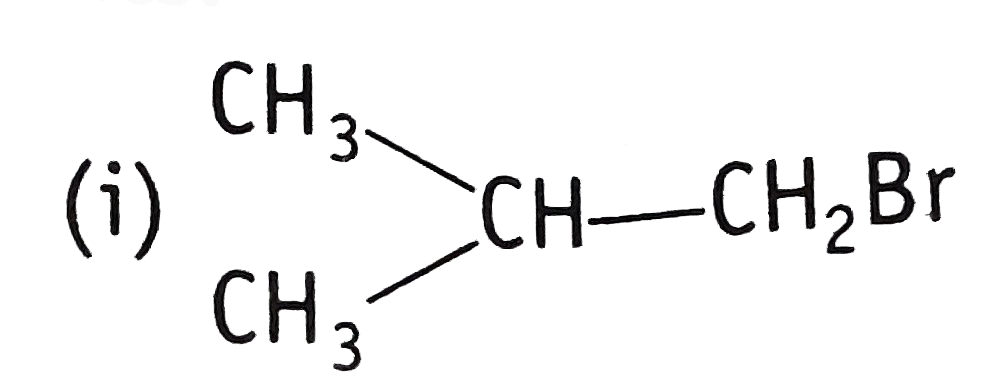Arrange the following compounds in increasing order of boiling points :
(i) C3H8 (ii) C2H5OH (iii) CH3CHO (iv) CH3COOH
To arrange the compounds in increasing order of boiling points, we need to analyze the intermolecular forces present in each compound. The compounds given are:
1. C3H8 (Propane)
2. C2H5OH (Ethanol)
3. CH3CHO (Acetaldehyde)
4. CH3COOH (Acetic acid)
Step 1: Identify the type of intermolecular forces in each compound.
- C3H8 (Propane): This is a non-polar molecule and primarily exhibits London dispersion forces, which are the weakest type of intermolecular forces.
- C2H5OH (Ethanol): Ethanol can form hydrogen bonds due to the presence of the hydroxyl (-OH) group. Hydrogen bonding is a strong intermolecular force.
- CH3CHO (Acetaldehyde): Acetaldehyde has a polar carbonyl group (C=O), which allows for dipole-dipole interactions. However, it does not have hydrogen bonding like ethanol.
- CH3COOH (Acetic acid): Acetic acid can form hydrogen bonds as well, and due to its ability to form two hydrogen bonds (one from the -OH group and one from the carbonyl oxygen), it has strong intermolecular forces.
Step 2: Compare the strength of intermolecular forces.
- Weakest: Propane (C3H8) - London dispersion forces.
- Next: Acetaldehyde (CH3CHO) - Dipole-dipole interactions.
- Next: Ethanol (C2H5OH) - Hydrogen bonding (one hydrogen bond).
- Strongest: Acetic acid (CH3COOH) - Hydrogen bonding (two hydrogen bonds).
Step 3: Arrange the compounds in increasing order of boiling points.
Based on the strength of the intermolecular forces, we can arrange the compounds as follows:
1. C3H8 (Propane) - Lowest boiling point
2. CH3CHO (Acetaldehyde) - Higher boiling point than propane
3. C2H5OH (Ethanol) - Higher boiling point than acetaldehyde
4. CH3COOH (Acetic acid) - Highest boiling point
Final Order:
Increasing order of boiling points:
C3H8<CH3CHO<C2H5OH<CH3COOH
---
2. C2H5OH (Ethanol)
3. CH3CHO (Acetaldehyde)
4. CH3COOH (Acetic acid)
- C2H5OH (Ethanol): Ethanol can form hydrogen bonds due to the presence of the hydroxyl (-OH) group. Hydrogen bonding is a strong intermolecular force.
- Next: Acetaldehyde (CH3CHO) - Dipole-dipole interactions.
- Next: Ethanol (C2H5OH) - Hydrogen bonding (one hydrogen bond).
- Strongest: Acetic acid (CH3COOH) - Hydrogen bonding (two hydrogen bonds).
2. CH3CHO (Acetaldehyde) - Higher boiling point than propane
3. C2H5OH (Ethanol) - Higher boiling point than acetaldehyde
4. CH3COOH (Acetic acid) - Highest boiling point
Increasing order of boiling points:
C3H8<CH3CHO<C2H5OH<CH3COOH
Topper's Solved these Questions
- ALDEHYDES, KETONES AND CARBOXYLIC ACIDSBOOK - ICSECHAPTER - ALDEHYDES, KETONES AND CARBOXYLIC ACIDSEXERCISE - EXERCISE (PART-I OBJECTIVE QUESTIONS)
303 Videos
- ALDEHYDES, KETONES AND CARBOXYLIC ACIDSBOOK - ICSECHAPTER - ALDEHYDES, KETONES AND CARBOXYLIC ACIDSEXERCISE - EXERCISE (PART-II DESCRIPTIVE QUESTIONS) (VERY SHORT QUESTIONS)
282 Videos
- ALCOHOLS, PHENOLS AND ETHERS BOOK - ICSECHAPTER - ALCOHOLS, PHENOLS AND ETHERS EXERCISE - ISC EXAMINATION QUESTIONS
25 Videos
- APPENDIX II ( TYPICAL CONVERSIONS)BOOK - ICSECHAPTER - APPENDIX II ( TYPICAL CONVERSIONS)EXERCISE - AROMATIC CONVERSIONS
98 Videos
Similar Questions
Arrange the following in increasing order of boiling points :
(CH3)3N,C2H5OH,C2H5NH2
View SolutionWrite structure of A, B C and D in the following eactin sequence :
CH3COClH2/Pd−BaSO4−−−−−−−−−→Adil. NaOH−−−−−→BΔ−−→C ⏐↓CH3MgBr/H3O+ D
(b) Arrange the following compounds in the increasing order of their boiling points :
CH3CHO,CH3CH2OH,CH3OCH3,CH3COOH
View SolutionArrange the following compounds in increasing order of their boiling points.
CH3CHO,CH3CH2OH,CH3OCH3,CH3CH2CH3
View SolutionArrange the following compounds in the order of increasing boiling points :
(i) CH3COC1
(ii) (CH3CO)2O
(iii) CH3CONH2
(iv) CH3COOH.
View SolutionArrange the following compounds in increasing order of their boiling points.
 , (ii) CH3CH2CH2CH2Br
, (ii) CH3CH2CH2CH2Br
(iii) H3C−CH3C∣∣Br−CH3
View SolutionArrange the following compounds in the increasing order of their boiling points:
CH3CH2CH2CHO,CH3CH2CH2CH2OH,H5C2−O−C2H5,CH3CH2CH2CH3
View SolutionArrange the following compounds in the order of increasing boiling points :
(i)CH3CN (ii)CH3Cl (iii)CH3NC
View SolutionRearrange the following compounds in the increasing order of their boiling points :
CH3−CHO,CH3−CH2−OH,CH3−CH2−CH3
View SolutionI. Arrange the compounds of (a) in the order of decreasing boiling points and (b) in the order of decreasing solubility in water.
(A) (1) Ethanol, (2) Propane, (3) Pentanol
(B) (1) Butane, (2) 1,2,3-Pentane triol, (3) Butyl alcohol
(C) (1) Pentane, (2) Pentanol, (3) Hexanol
II. Arrange the following in the decreasing order of their boiling points.
(A) (1) C3H8, (2) C2H5OH, (3) (CH3)2O, (4) HOH2C−−−−CH2OH
(B) (1) 3-pentanol, (2) n-Pentane, (3) 2,2-Dimethyl propanol, (4) n-Pentanol
III. Arrange the following alcohols (a) in the decreasing order of their boilling points and (b) in the decreasing order of their solubility in water.
(1) n-Butyl alcohol
(2) sec-Butyl alcohol and
(3) tert-Butyl alcohol
IV. Arrange the following compounds in the order of their increasing boiling points.
(1) CH3COC1 , (2) (CH3CO)2O , (3) CH3CONH2 , (4) CH3COOH
View SolutionArrange the following compounds in decreasing order of acidity.
(i) ClCH2CH2CH2COOH
(ii) CH3CHClCH2COOH
(iii) CH3CH2CHClCOOH
View Solution
